If you try to upgrade your Windows 11/10 to the next version, and you see a message – Error 0xC1900101 – 0x20017, The installation failed in SAFE_OS phase with an error during BOOT operation, then this post will be able to help you.
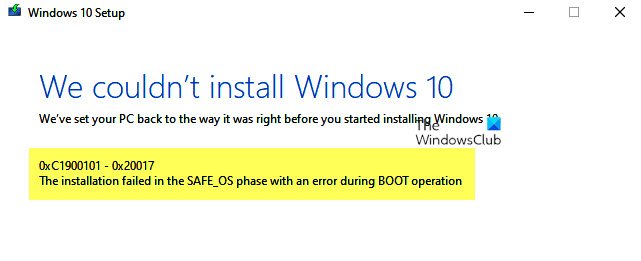
0xC1900101 is a frequently observed code which occurs at t any stage of the upgrade process; It is also called as the generic rollback code which points out to the presence of an incompatible driver. Along with updating the drivers, it is suggested to run Windows Setup using a minimal set of drivers and startup programs by performing a clean boot before initiating the upgrade process.
Installation failed in SAFE_OS phase with an error during BOOT operation
The failure occurs during an update where OS is not able to migrate the driver as it causes illegal operation. It results in a rollback of the operating system. This is a SafeOS boot failure, typically caused by drivers or non-Microsoft disk encryption software. During the SAFEOS phase, the system verifies that everything, including drivers, is behaving as they are expected. Any operation which is not secure or signatures are missing will cause an issue when it comes to system stability. I have noticed that many a time when you force upgrade an incompatible system, it will result in BSOD.
It is crucial that you find the driver causing the problem, and it is rather easy.
Windows 11/10
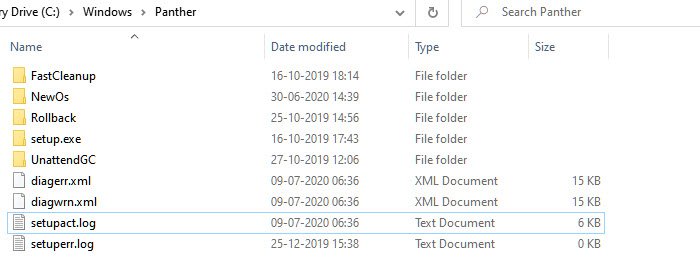
Go to %windir%\Panther directory, and then locate the Setuperr.log and Setupact.log files and open them. Among the two files, Setupact.log is specifically created when an upgrade fails. You will have to look for a reference for failure in the log file and find the driver responsible.
Windows 8/8.1/7
Microsoft suggests looking at the list here where it lists all the log files created during the rollback phase. When the Windows upgrade installation fails, and you have successfully rolled back the installation to the previous operating system desktop, these files are here to help you troubleshoot.
Fix Windows Setup error 0xC1900101 – 0x20017
There are only two ways to fix it, either update the driver to a compatible version or roll back the problematic driver. It may so happen that you made a recent update to drive, and then tried to upgrade. If that’s the case, then rolling back will help you to upgrade. If the upgrade has an issue with the existing driver, and you are forcing the update, you should check if the driver has a compatible version.
- Ensure that all the drivers are updated
- Uninstall the problematic drivers
- Upgrade in Clean Boot State.
You will need admin permission to perform any of these operations.
1] Ensure that all the drivers are updated
The first thing you should do is update the drivers with the version which is compatible with the version you are planning to upgrade. Most of the drivers offer backward compatibility, so that should be a problem unless mentioned otherwise. In case you have updated, make sure to roll back the driver to the previous version.
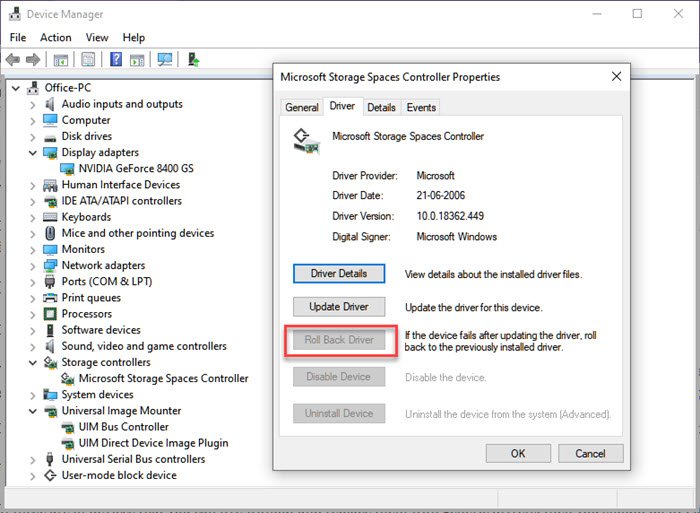
If you are not able to find the latest version of the driver, we suggest using tools like Double Driver, Driver Doctor, and more.
2] Uninstall the problematic drivers
If these are of devices that you can live without and replace them with generic drivers, then you should do it. I am suggesting this, keeping in mind that the upgrade is essential for you. You can choose to remove the hardware and install it again, and this time uses an alternate drive instead of the one you downloaded.
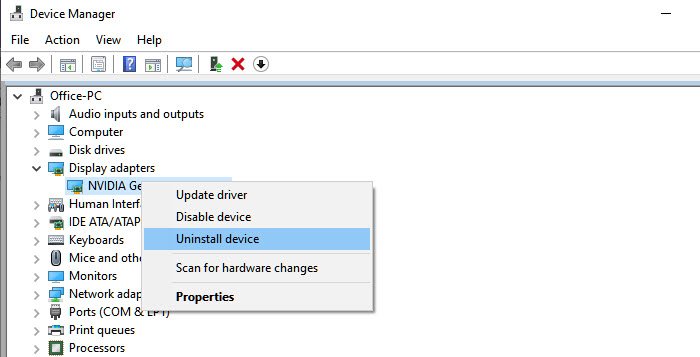
- Open Device Manager using Win +X followed by M
- Locate the hardware that is causing the problem.
- Right-click and choose to Uninstall the device
- Once it is removed, click on Action > Scan for hardware changes
- The device will be detected, and Windows will install the driver.
If Windows installs the same driver, you choose to install a generic driver by following this guide.
3] Upgrade in Clean Boot State
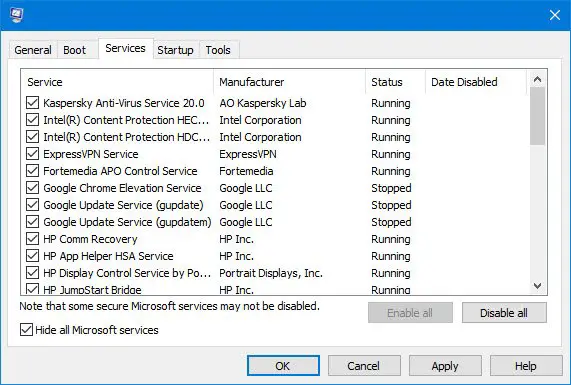
When you start the computer in clean boot, the computer starts by using a pre-selected minimal set of drivers and startup programs. Since the drivers will not be loaded, you will be able to upgrade, but make sure to either upgrade or roll back the driver after everything is complete.
If none of these work, then it’s best to wait for an official solution from Microsoft. Many a time, the problem doesn’t have a solution because it is not compatible. I remember performing a forced upgrade, and all I got was a green screen of death.
Related reads:
Leave a Reply